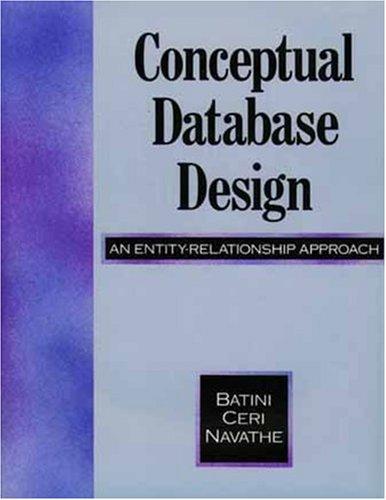Answered step by step
Verified Expert Solution
Question
1 Approved Answer
dfa minimization Step 1 : Remove unreachable states. Step 2 : Mark the distinguishable pairs of states. To achieve this task, we first mark all
dfa minimization
Step : Remove unreachable states.
Step : Mark the distinguishable pairs of states.
To achieve this task, we first mark all pairs p q where pF and qZF as distinguishable. Then, we proceed as follows:
repeat
for all non marked pairs p q do
for each letter a do
if the pair p aq a is marked
then mark p q
until no new pairs are marked
Step : Construct the reduced automaton A
implement dfa minimization with python from scratch with no other library simple function and no ambugity
def removeunreachablestatesstates alphabet, transitions, initialstate, acceptingstates:
reachablestates set
stack initialstate
while stack:
currentstate stack.pop
reachablestates.addcurrentstate
for letter in alphabet:
nextstate transitions.getcurrentstate, letter None
if nextstate is not None and nextstate not in reachablestates:
stack.appendnextstate
unreachablestates setstates reachablestates
for state in unreachablestates:
states.removestate
acceptingstates.discardstate
for letter in alphabet:
transitions.popstate letter None
def markdistinguishablepairsstates alphabet, transitions, acceptingstates:
markedpairs set
for i state in enumeratestates:
for state in statesi ::
if state in acceptingstates and state not in acceptingstates or state in acceptingstates and state not in acceptingstates:
markedpairs.addstate state
changed True
while changed:
changed False
for state in states:
for state in states:
if state state not in markedpairs and state state not in markedpairs:
for letter in alphabet:
nextstate transitions.getstate letter None
nextstate transitions.getstate letter None
if nextstate nextstate in markedpairs or nextstate nextstate in markedpairs:
markedpairs.addstate state
changed True
return markedpairs
def minimizedfastates alphabet, transitions, initialstate, acceptingstates:
removeunreachablestatesstates alphabet, transitions, initialstate, acceptingstates
markedpairs markdistinguishablepairsstates alphabet, transitions, acceptingstates
while markedpairs:
state state markedpairs.pop
for letter in alphabet:
nextstate transitions.popstate letter None
nextstate transitions.popstate letter None
if nextstate is not None and nextstate is not None:
newstate minnextstate nextstate maxnextstate nextstate
transitionsstate letter newstate
transitionsstate letter newstate
if state in acceptingstates and state not in acceptingstates:
acceptingstates.removestate
elif state in acceptingstates and state not in acceptingstates:
acceptingstates.removestate
removeunreachablestatesstates alphabet, transitions, initialstate, acceptingstates
markedpairs markdistinguishablepairsstates alphabet, transitions, acceptingstates
return states, alphabet, transitions, initialstate, acceptingstates
# Example usage:
states
alphabet ab
transitions a: b: a: b: a: b:
initialstate
acceptingstates
minimizeddfa minimizedfastates alphabet, transitions, initialstate, acceptingstates
printminimizeddfa
line in markdistinguishablepairs
for state in statesi ::
TypeError: 'set' object is not subscriptable
fix the error please
Step by Step Solution
There are 3 Steps involved in it
Step: 1

Get Instant Access to Expert-Tailored Solutions
See step-by-step solutions with expert insights and AI powered tools for academic success
Step: 2

Step: 3

Ace Your Homework with AI
Get the answers you need in no time with our AI-driven, step-by-step assistance
Get Started


